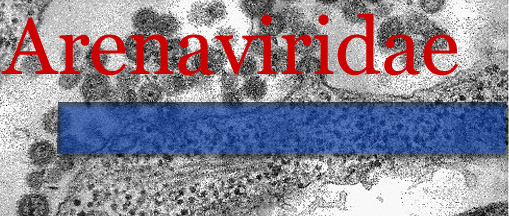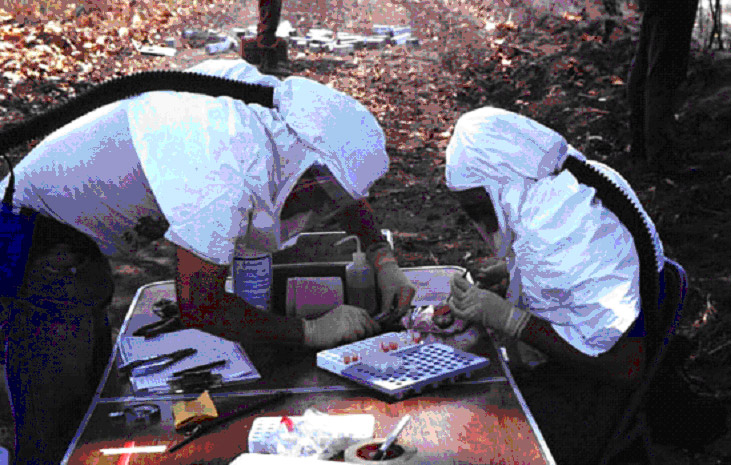 |
Sabia Virus |
Epidemiology and History:
Only one known case of naturally contracted Sabia virus infection has been
documented, yet the virus remains important due to at least two laboratory
infections that have occurred. The original natural case of Sabia virus infection
occurred in a woman staying in the village of Sabia, outside of Sao Paulo
Brazil, in 1990. In this instance, severe liver damage led physicians to an
initial diagnosis of yellow fever. However, this was soon ruled out through
a thorough blood test. Following the patient’s death, the agent was
identified as a then unknown arenavirus. The viriologist who was responsible
for this identification, however, contracted the disease as during the course
of his research; he, fortunately, survived. Four years later, while working
under level 3 biohazard conditions, a researcher at the Tropical Medicine
Clinic at Yale-New Haven Hospital was exposed to the virus. Exposure apparently
resulted when a centrifuge bottle containing infected tissue cracked and leaked
into the spinning centrifuge, releasing aerosolized virus particles into the
air. New World arenaviruses, or those members of the family that are endemic
to the Americas, are being discovered at a rate of close to one every three
years, a fact that brands Sabia and its cousins as some of the most important
emerging viruses of their regions.

Transmission:
Like other New World arenaviruses, transmission is assumed to be via aerosolized
virus particles. Close contact with infected individuals or suspected animal
reservoirs or vectors are key factors in Sabia diagnosis. Though the animal
reservoir is as yet unknown, a rodent found throughout the region surrounding
the small village of Sabia has been implicated. In the history of the virus,
laboratory-related infection has been a primary method of transmission, and
therefore necessitates the utmost caution when handling the virus in a laboratory
setting.
Diagnosis:
In discussing Sabia virus and the other New World arenaviruses, diagnosis
is one of the most important areas of concern. Especially in initial stages,
infection with Sabia and its relatives is often indistinguishable from other
common viral diseases, including the prevalent pathogen yellow fever. Should
the disease develop hemorrhagic manifestations, dengue hemorrhagic fever is
also a possibility. Consequently, virologic testing is incontrovertibly necessary
in any cases of suspected arenavirus infection. Swift diagnosis is necessary
in cases of infection with any of the New World arenaviruses, as death may
sometimes occur even before antibodies are detected. Antigen-capture ELISA
remains the preferred method of diagnosis.
Symptoms:
Due to the small number of individuals infected with Sabia virus, future cases
may elaborate upon current known symptoms. Fever, headache, myalgia, nausea,
vomiting, weakness, and pronounced sore throat were symptoms exhibited in
all cases of Sabia infection. Additional symptoms include conjunctivitis,
diarrhea, epigastric pain, and bleeding gums. In both cases that occurred
in 1990, symptoms lasted approximately 15 days. However, symptoms ceased in
the index case due to death, while the laboratory technician convalesced following
this time period. Leucopenia, thrombocytopenia, and proteinuria were all present
in each case, though these are hardly unique to the virus. Gastro-intestinal
hemorrhage was marked in the index case, though generalized hemorrhagic fever
appears to have been exhibited in all documented cases.
Treatment:
Like other arenaviruses, Sabia virus proved to be responsive to treatment
with ribavirin. In confirmed cases of Sabia infection, ribavirin is unquestionably
the most appropriate treatment. Additionally, treatment of symptoms related
to dehydration and bleeding is also recommended. Hemorrhage is most often
the primary concern, meaning that fluid intake should be monitored carefully
to compensate for vascular leaking and edema.

